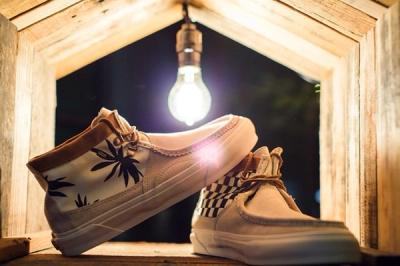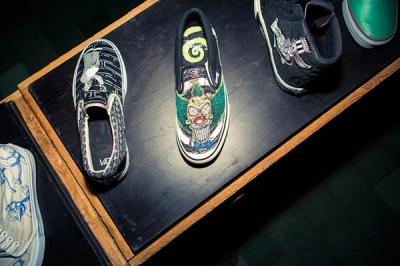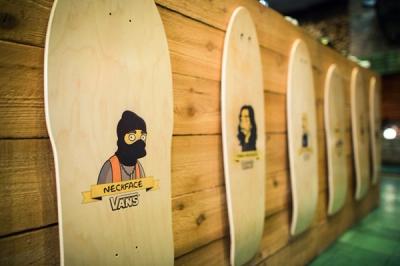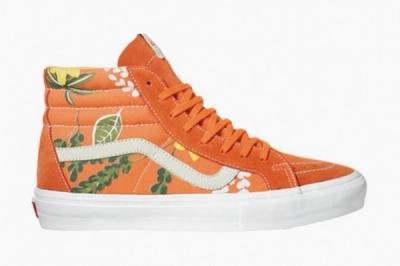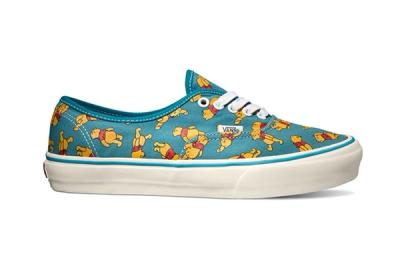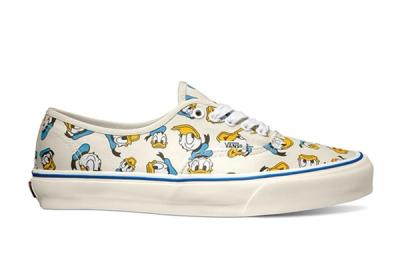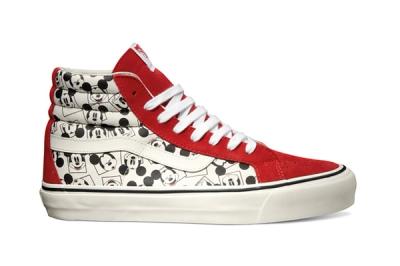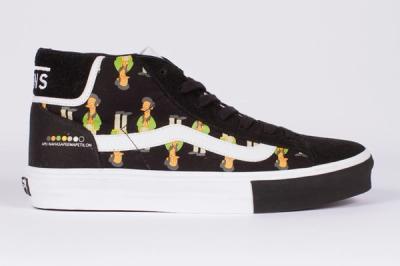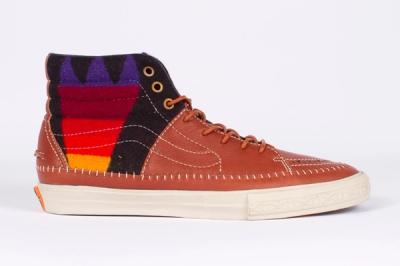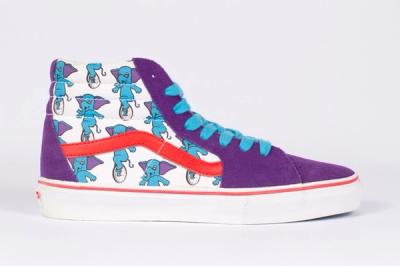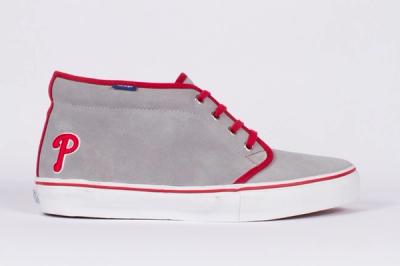Vans Vault: Ten Years Of Lockdown
It’s a sticky summer night in the heart of New York City last year and Sneaker Freaker has been invited to celebrate the 10th anniversary of Vans’ Vault line, just a couple of Manhattan blocks away from where Vault was launched back in 2003. NY’s finest are in full effect with everyone from the local skate scene enjoying the chance to catch up with old friends. Vita and Druzzi of The Rapture and Washed Out main brain, Earnest Greene supply the muzak, while M. Ward reminds us all that the guitar still sounds spectacular.
A party like this is also a chance to reflect on how far Vans has come in the last decade. Having established their first West Coast factory in the 1960s, Vans’ canvas shoes quickly became an essential element of the Californian lifestyle. The Authentic, Slip-On, Era, Sk8-Hi and Old Skool are the foundation of the brand, but sometimes companies forget what made them great in the first place and Vans was plagued by periodic bouts of epic success followed by meltdowns and firesales through the 80s and 90s. As Vans tried desperately to keep up with the frontunners, ill-fated experiments with nylon joggers, naff basketball shoes and even showpony sneakers for breakdancers showed how far they had deviated from their hallowed heritage.
As memories of Jeff Spicoli faded into VHS oblivion, Vans was left with the challenge of embracing their checkerboard past, while still forging a connection with the next generation. Music was the brand’s salvation. Style flipped their way too. Not long after the start of the new millenium, Vans suddenly morphed into the ultimate lifestyle brand with tentacles in every subculture on the planet. The last five years has seen the brand sneak out of the skate park and achieve global domination, though the seeds for that success were planted much earlier. One of them was a new idea called Vault.
Back to basics
As 2003 rolled around, it was clear that the world of footwear was about to undergo massive change. Technology was accelerating communication like never before. In the sneaker world, forums like Niketalk and Crooked had sprung up and the arrival of blogs and a magazine called Sneaker Freaker coalesced a group of underground footwear fanciers into a global phenom that became known as ’the sneakerhead’. This new consumer was clearly an educated breed with fussy tastes and inflated opinions, but brands were eager to feed the beast. But how?
Well aware of this emerging scene, management at Vans knew they needed a showpiece collection that would bring hype and creative class to their portfolio. Steve Mills, the current Director of Lifestyle Footwear at Vans was there at the time and remembers it well. ‘Classics were not a focus of the company in the early-2000s. The backbone of the company, our soul and our DNA was almost non-existent.’ Restoring pride in the brand became paramount and the best way to do that was to put classic Vans models on a pedestal. ‘When you looked at what was happening, brands were increasing awareness through higher priced, unique, collaborative and limited product offerings sold through the better boutiques and sneaker shops globally,’ Mills explained. ‘But we were the only brand able to come from the world of authentic skateboarding.’ Vault by Vans was born.
The first
They say you always remember your first, but not many would recall that the inaugural Vault releases were collaborations with fashion designers Luella Bartley and Rebecca Taylor back in 2003. Don’t feel ashamed at the lack of recognition, I had to rely on Dr Google to fill in the blanks on those names too. Since then, high profile projects with Marc Jacobs, A.P.C., Kenzo, Disney and even Major League Baseball have elevated the Vault name deep into our consciousness. Underground pop artists such as Robert Crumb, Robert Williams and Niagara were also drafted in to lend a hand and their uniquely creative eye. A partnership with legendary Cali hotrodders Mooneyes was another authentic link to the burgeoning obsession with 50s gasser style.
As much as Vault looked back at the past with passion, it also had one eye firmly focused on the future. A new benchmark was established in 2007 when they enlisted a dream team of contemporary artists including Kaws, Stash, Futura and Neckface to create new (and often disturbing) interpretations of characters from The Simpsons. Those Vault shoes are now on the Bay for $400, so God knows what those skate boards are worth.
House rules
As Vault evolved, the spirit of creative respect and collaboration became so strong that Vans soon elevated one of their own to headline status. Starting out at Stussy where he created logos and graphics, Taka Hayashi joined Vans in 2008, quickly making a name for himself. Encouraged to express his free-wheeling individuality, Hayashi went on a creative rampage, experimenting with Vans heritage, premium materials, unorthodox shapes and a myriad of ethno influences. Hayashi’s trademark touch of timeless styling and intricate detailing quickly became evident. New models like the shin-creeping No Quarter and the leisurely Akat LX cemented his cachet.
Notoriously shy and reluctant to speak about his work, I managed to briefly corner the quiet genius to quiz him about his role at Vans. ‘In 2004 I was approached to work on the second Vans Syndicate project and I was really excited, being a huge fan of Vans since I was a little kid. My objective has always been to create a high-end quality product that ties back to our skate/surf DNA with a twist.’ Steve Mills acknowledged Hayashi’s contribution and the creative freedom he was given under Vault.
‘We don’t put a lot of parameters on Taka Hayashi’s signature line. But then again, even though Taka is pushing the envelope on traditional sneaker design, a lot of the time he ends up with strong ties back to our heritage.’
Restricted access
We all know a kiss from an idol can turn a frog into the Fresh Prince, but brilliant marketing and providing less supply than demand can also breed envy and intrigue. Since inception, Vault has been very shrewd in manipulating the evolving rules of hype-generation. Hooking up with big names for colabs is a start, but it’s the canny way Vans has marketed those Vault releases that has helped build the line’s elusive appeal. When Vault say limited, they mean it. There were only 100 pairs of each of The Simpsons pairs manufactured and just 12 pairs of the Major League Baseball team shoes. You don’t make a lot of dollars when you’re booking those kinds of numbers, but you do earn some headlines.
See you in ten
Work alongside outsiders at the top of their game, respect the talented people within your own company, dictate the direction and make it feel even more special by capping production. The Vault by Vans story reads like the definitive how-to-create-a-brand guide, so it’s easy to see why Mills was confident from the start that Vault would ‘absolutely’ last ten years. But could anyone have predicted a decade ago that the flow-on effect to the Vans brand at large would be so conspicuous? It’s not just Vault anniversary parties where Vans vulcs dominate. Take a look down at any music festival in the last few years. There’s more jazz stripes than jazz cigarettes on the dancefloor.
Where to from here? How do you keep a good thing going? ‘It’s hard to tell,’ Mills says. ‘Vault is like a clay sculpture. We are constantly tweaking it, adding to it, taking away and adapting. There will always be room for improvement but our biggest critic is ourselves so as long as we stay focused, we will continue to deliver.’
Amen.
